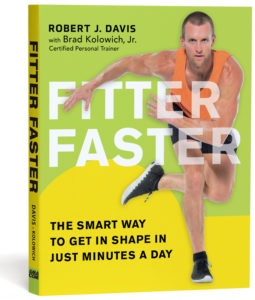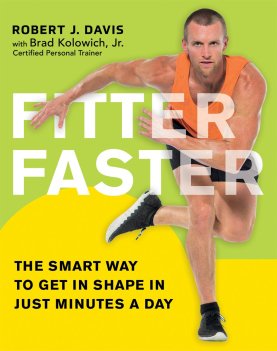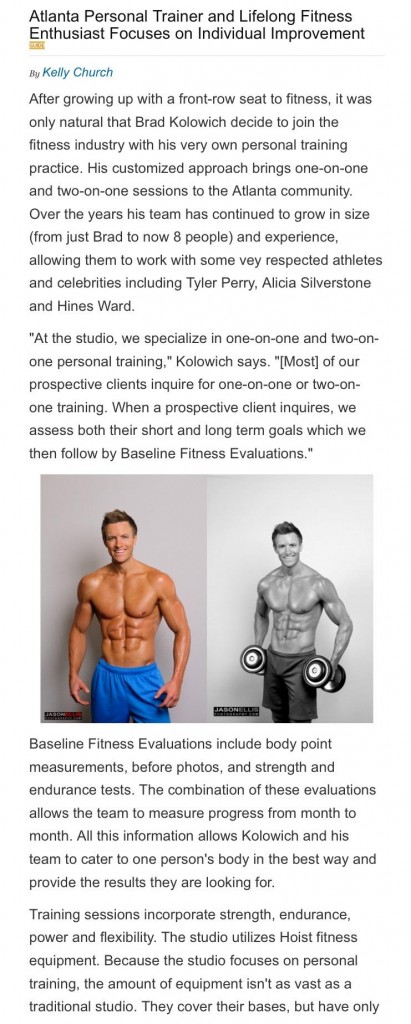Tag Archive for: personal fitness trainer
Some people do aerobic exercise first thing, before they’ve eaten, because they think it will help them burn more fat. There is some evidence that this practice, sometimes called “fasted cardio,” may boost fat burning — but only fleetingly. Over the course of days or weeks (which is what counts), research shows that it doesn’t seem to offer any advantages. For example, in a four-week trial that randomly assigned young women to either fast or drink a 250-calorie shake before their aerobic workouts (while otherwise eating a low-calorie diet), both groups lost the same amount of fat and weight. Similarly, a study involving overweight women who did high-intensity interval workouts for six weeks after either fasting or eating found no differences in fat loss.
All in all, the best time to work out is whenever you can. If you exercise at different times of the day, be sure to note the hour as you’re tracking your progress. That way, you’ll know when your body clock may be to blame for a less-than-optimal workout.
— Robert J. Davis
Adapted from “Fitter Faster: The Smart Way to Get in Shape in Just Minutes a Day.”
Adapted from https://www.washingtonpost.com/national/health-science/what-is-the-best-time-of-day-to-exercise-its-not-when-you-think/2017/06/16/2020c3ba-51cf-11e7-be25-3a519335381c_story.html?utm_term=.65bc4f5ef6f2
Do you have a job that keeps you sitting at your desk all day? Do you commute for long periods of time? Do you get home and just want to lay in bed and watch some TV?
That’s what life is like for most people in America. We drive to work, sit at our desk all day, drive back home and then sit down to wind down after a long day of work.
Hopefully, somewhere in the midst of all of that you are fitting in some exercise!
I’ve been reading a book called “Fitter Faster” by Health Journalist Robert J Davis and Certified Personal Trainer Brad Kolowich, Jr., which discusses this, and I wanted to share it with you all.
Can Sitting Cancel Out the Benefits of Exercise?
By Robert J. Davis, Ph.D.
Author of Fitter Faster: The Smart Way to Get in Shape in Just Minutes a Day
Adapted from Fitter Faster: The Smart Way to Get in Shape in Just Minutes a Day (AMACOM) by Robert J. Davis with Brad Kolowich, Jr. For more information, please visit https://fitterfasterplan.com/
You’ve probably heard the trendy phrase that “sitting is the new smoking.” While it’s an exaggeration to equate the two behaviors—nothing comes close to smoking in its many ruinous and deadly effects on the body—research does show that prolonged sitting may be harmful, even if you exercise regularly.
Pooling results from more than 40 studies, researchers concluded that the more time people spend on their duffs—whether at a desk, on the couch, or in the car—the greater their risk of premature death, cardiovascular disease, cancer, and especially type 2 diabetes.
Regular exercise, particularly higher levels of physical activity, appears to blunt these harmful effects somewhat but may not eliminate them entirely.
An analysis of more than a dozen studies concluded that we need at least 60 minutes a day of moderately intense exercise (such as brisk walking, doubles tennis, or ballroom dancing) to counter the increased risk of premature death due to prolonged sitting.
But another study found that the same amount of exercise – which is more than most physically active people get – doesn’t undo the negative effects of sitting on insulin levels and blood fats known as triglycerides.
The damage from prolonged sitting is thought to be due to reduced muscle activity—especially in the large muscles of the legs and back—which can decrease the body’s ability to regulate blood sugar and remove harmful blood fats.
Sitting for long periods may also adversely affect blood vessel function and increase food cravings, causing us to eat more and gain weight.
To reduce sitting time:
- At work, stand up for a few minutes every half hour, perhaps during phone calls, coffee breaks, or meetings.
- If possible, use a desk that lets you work both standing and seated. Or try one attached to a treadmill that allows you to slowly walk while you work.
- In the car, park as far away as possible from the door so you’ll be able to walk more. Stand if you ride the bus or subway.
- At home, get up regularly from your computer. Try standing and doing chores while watching TV.
Incorporating short bursts of standing and movement like this will keep you from becoming an “active couch potato” – someone who exercises and then remains largely sedentary the rest of the time.
By thinking of fitness as something that entails what you do the entire day – not just the relatively few minutes spent sweating – you’ll be able to fully reap the rewards of your workouts.
Adapted from Fitter Faster: The Smart Way to Get in Shape in Just Minutes a Day (AMACOM) by Robert J. Davis with Brad Kolowich, Jr. For more information, please visit www.fitterfasterplan.com.

Adapted from http://www.easylivingtoday.com/can-sitting-cancel-out-the-benefits-of-exercise/
We hope you all enjoyed this wonderful article!
Best,
Caroline Kolowich
From health journalist Davis and personal trainer Kolowich comes this precise guide to overcoming fitness barriers and exercising efficiently via high-intensity interval and circuit training. Davis and Kolowich break down the process of getting fit into four key parts: get ready, get smart, get more out of exercise, and get going. They begin with motivational facts: in addition to increasing life expectancy and improving health, exercise also enables better sex and sleep, among other benefits. Instead of providing specific motivation plans, the authors provide thoughtful advice that is widely applicable: make a game plan, make winning a goal, and reward yourself. Part two details the fundamentals of aerobic activity, strength training, and stretching, and part three gives instructions on what to consume (protein, complex carbs, water) and how to prevent “bad pain.” The final section presents a varied, customizable workout regimen that can also be done in as little as 15 minutes. What separates this guide from others is its commitment to facts and plans backed by science and research; throughout, the authors debunk myths and answer questions such as “Does sex before physical activity impair athletic performance?” and “Does more sweating mean a more intense workout?” This is an important read for exercise hopefuls and aficionados alike. (June)
Book Review found on: http://www.publishersweekly.com/978-0-8144-3771-1
Spring has sprung and it’s soon swimsuit season. After having eaten your way through winter, you decide it’s time to PANIC. Well, calm down and grab a copy of Fitter Faster by Robert Davis and Brad Kolowich. Here the authors lay out a very doable plan to help
you jump start your fitness regime.
Nothing they suggest you do is cumbersome and they are not judgemental. The authors outline “a smart way to get in shape in just minutes a day.” And no, they do not promise you that you are going to spend 10 minutes a day exercising, and end up looking like a Victoria Secrets model. But they will help you create a plan for yourself so that you can end up healthy, happy, and be the best that you can be.
The authors discuss eating and how to get the most out of your diet. They don’t starve you, but turn you on to foods that benefit your body. They teach the reader how to eat and when to eat.
They discuss that heart muscle and put to rest some old wives tales. They talk about the biggest curse of our era, and that is sitting all day long. They point out how even the simplest change in the way we live our lives can have a lasting beneficial effect and they tell you why.
You are taught the benefits of good gear. The right gear does make a difference. If for nothing else it prevents injury. Listen, having the right sneakers keeps you from hurting your legs, your feet, and very importantly your knees. They take the reader through the latest fads, and discuss what you should and should not buy.
The authors discuss how to make exercising fun as they outline which type of exercise might just be for you. They go through popular forms of cardio with an eye to making sure that you will stick with the program.They help you be realistic in your approach and your goals.
Then in the end, they outline for you beginner, intermediate, and advanced exercise programs from weight training, to cardio, to strength, to the latest HIIT (high intensity interval training) and plyometrics, beginning with that all important stretch. You choose the level you want to work at, as you follow their seven day chart. Don’t worry on the seventh day you get to rest.
If you are a beginner, even if you are advanced, this book will jump start any program and turn your old bored program into something new again.
By Dr. Mercola
If you’re looking for the best strategy to dramatically improve your health, then you’ve come to the right place.
Many people today struggle with weight issues, diseases, and other health problems that impair their ability to enjoy life. Many resort to pharmaceutical drugs and other conventional methods to relieve their symptoms, but these are actually just Band-Aid solutions that typically result in more harm than good.
What they don’t realize is that they can significantly improve their health by just changing their diet and eating habits. And this program will help you achieve exactly that.
Fact: High-Quality Fat Is One of the Most Important Nutrients for You
Conventional physicians, nutritionists, and public health experts have long claimed that dietary fat promotes heart disease and obesity. This deception caused people to follow conventional low-fat, high-carb diets, which ruined the health of millions. Today, the general guideline for dietary fat intake is that it should only be 10 percent of your overall diet.
I believe that this is one of the most destructive health recommendations that have pervaded the U.S. food system, because you need at least 50 to 75 percent of your daily calorie intake in the form of healthy fats. This is one of the basic principles that I have incorporated in my Nutritional Plan.
So what is good fat and how can you distinguish it from unhealthy ones? We’ll discuss this more in detail as you go along this program.
Saturated fats from animal and vegetable sources are an important component of this program, as they provide you with a number of important health benefits and help in the proper functioning of your:
– Immune System
– Cell Membranes
– Heart
– Lungs
– Liver
– Bones
– Hormones
– Genetic Regulation
Saturated fats also promote satiety, reducing your hunger pangs so you avoid binge eating and unhealthy food cravings. By following this high-fat, low-carb diet, you will be able to optimize your weight and avoid virtually all chronic degenerative diseases.
This Optimized Healthy Food Pyramid Will Turn Your Health Around
The original food pyramid created by the U.S. Department of Agriculture (USDA) promotes a diet that has grains, pasta, and bread at its base (meaning they make up the majority of your diet) and fats at the top, or the smallest portion. But this can spell trouble, as grains break down into sugar in your body, driving insulin and leptin resistance.
I strongly believe that for optimal health, you should follow the opposite: increase your intake of healthy saturated fats and limit your grain and sugar intake. I’ve created my own Food Pyramid based on this ratio.
I also believe that you should always be conscious of what you eat – this means avoiding all processed foods that are loaded with additives, harmful chemicals, and genetically engineered ingredients that could put your health at risk.
Adapted from:
http://www.mercola.com/nutritionplan/index.htm
Make sure to check out this amazing article, “Atlanta Personal Trainer and Lifelong Fitness Enthusiast Focuses on Individual Improvement,” by Kelly Church featuring Brad!
To view the article, click on the picture below:
Congrats, Brad! Your dedication, hard work and passion for health, fitness and helping others continues to be such an inspiration to us all. Not only are you all of the above, but you are also one of the most genuine and positive individuals I have ever met. Thanks for being you!
& to our wonderful clients, thank YOU for being you. Our team is so happy and lucky to have you all!
I hope you all have a wonderful weekend!
Caroline Kolowich









